Ethiopia 13.61°N, 40.66°E. You can stand at the edge of one of the world’s longest existing lava lakes at the summit of Erta Ale volcano (ኤርታሌ in Amharic). To reach it, you’ll drive through the harsh and fascinating environment of the Danakil Depression. At up to 125 metres below sea level, it’s one of the lowest and hottest points on earth – an otherworldly landscape of salt flats, hot springs and volcanoes.
Published September 8th 2025 by Josef Clifford.
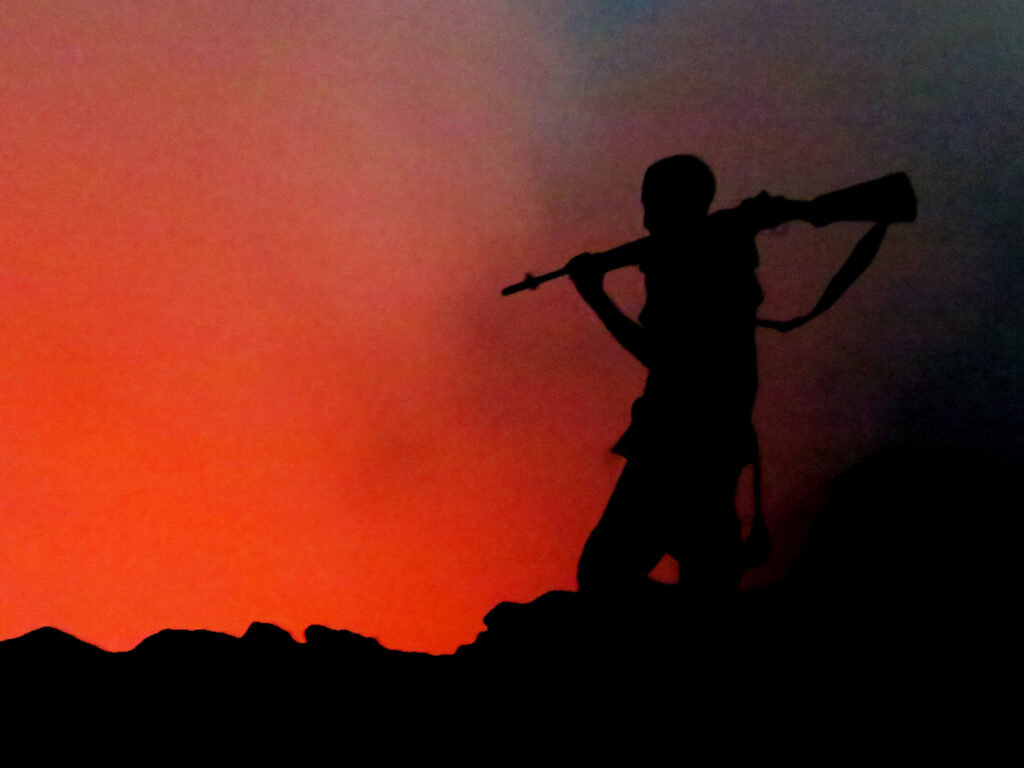
Tours: I went with ETT travel, who I’d recommend for their well organised secure tours and friendly guides. You will find tour options from a range of operators on Tripadvisor here and more info in the Practicalities section.
Security: you should monitor the security situation before planning a trip to the Danakil Depression. An upsurge in conflict in northern Ethiopia in recent years means you will likely start your tour in Semera rather than Mekele. You should go with an organised group. Whilst currently generally considered safe (as of September 2025), there have been security incidents in the past. This includes killings and kidnappings of tourists in 2012 and 2017.
Volcanic activity: although Erta Ale is an effusive volcano, volcanoes can be volatile. As of July 2025, there have been reports of increased activity including at both of Erta Ale’s craters, as well as gas plumes due to collapse of crust covering the lava lakes. Ensure you check latest activity reports here.
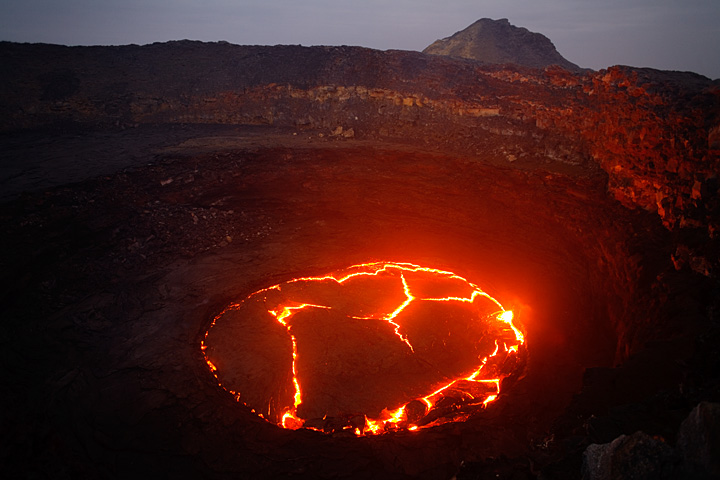
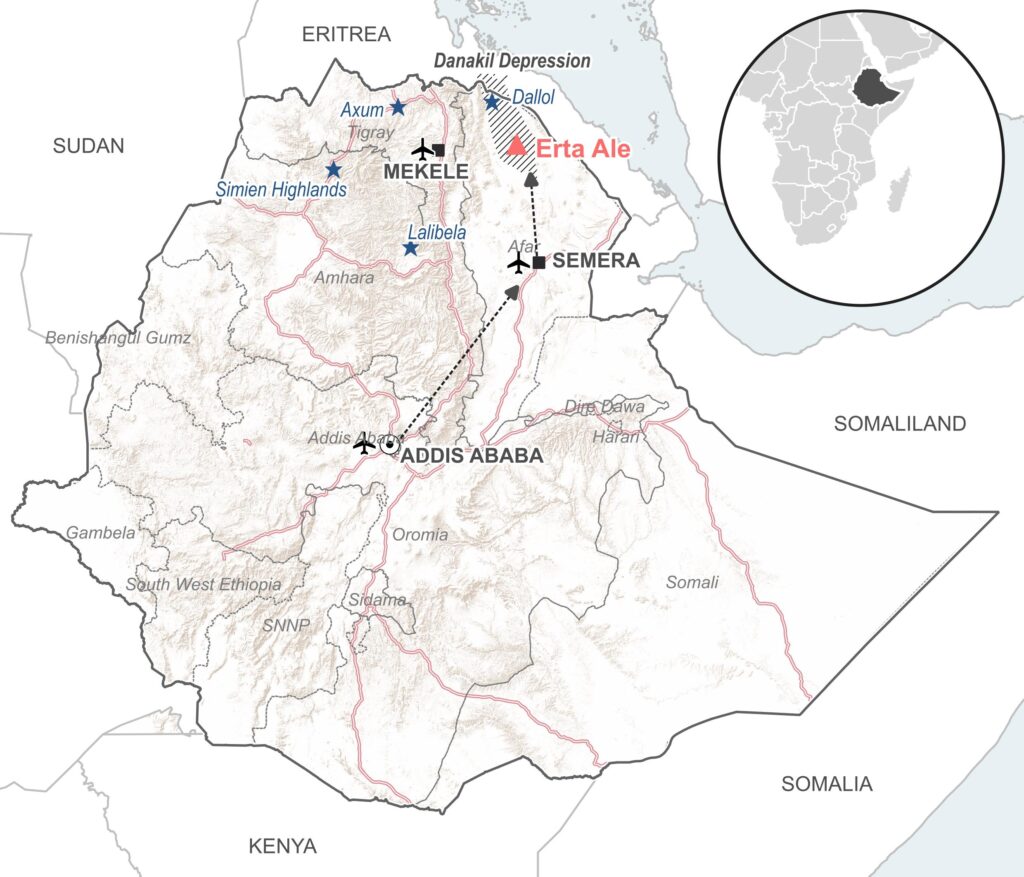
Jump to a section
> Into the Danakil Depression
> Camping at Erta Ale’s lava lake
> Exploring the acid pools and salt pans of Dallol
> Volcanology & geology
> Getting there and other practical bits
Into the depression
Ethiopia is a vast country and travel is slow. I usually prefer to travel overland, but with limited time I took an internal flight to Mekele, the capital of Tigray. When I visited in 2018, the city was the most common starting point for Danakil expeditions. However, as of 2025, most tours now start from Semera due to recent insecurity in Mekele.
The guide collected me from Mekele airport and we met the rest of the group in the office in the city centre. Because of the remoteness, you travel in a convoy into the Danakil Depression. As we descended from the verdant highlands of Mekele (2100m), we passed countless overturned lorries which must have veered off the road months or years ago. It didn’t fill me with confidence for the journey ahead I have to say!
After several hours of driving, we entered the flat expanse of the Danakil Depression. With temperatures regularly exceeding 50°C and extremely limited water resources, it’s a very inhospitable environment. The lakes are hypersaline (saltier than seawater), there are no permanent rivers and even groundwater is mostly brackish. It’s a poor area with scattered camps mostly inhabited by the nomadic Afar tribe. We passed herds of camels and goats as well as other livestock.
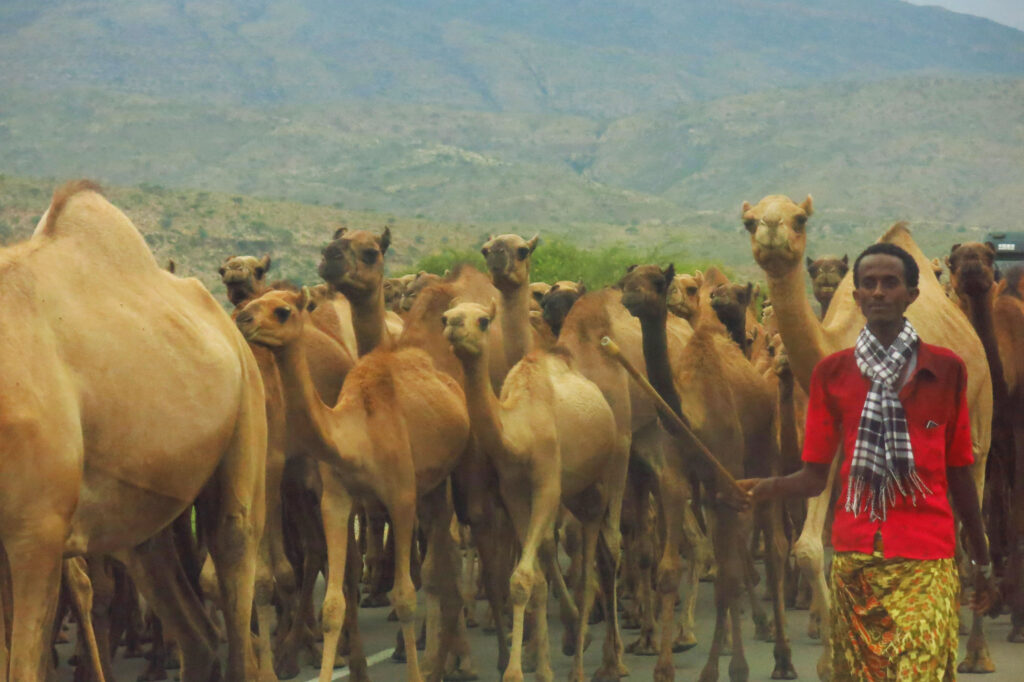
Lightning and sandstorms
We made a stop at the hypersaline Lake Afrera and had a relaxing swim in some hot springs. With such an abundance of salt, this area produces around 80% of Ethiopia’s national salt supply.1 Back on the road, we pushed on to Erta Ale.
Seemingly out of the blue, we passed a large group of Chinese workers constructing a major road through the desert. A reminder of the massive Chinese investment underway in Ethiopia. In fact, the road we were travelling on was surprisingly smooth, built by the Chinese just a few years ago.
Further into the Depression, a storm began to brew. Howling winds swept through the dusty land, kicking up a sandstorm. The weather changes quickly and dramatically in these parts. Suddenly, the car in front of us was struck by lightning. Luckily, it just caused an airbag to go off and no one was hurt. Still quite a shock though!
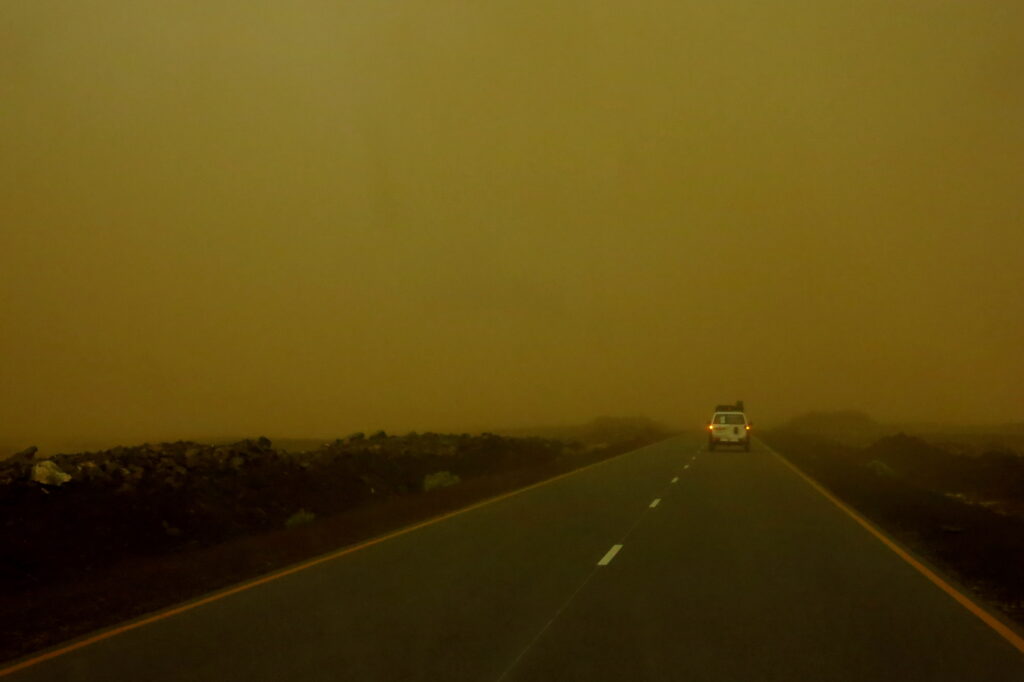
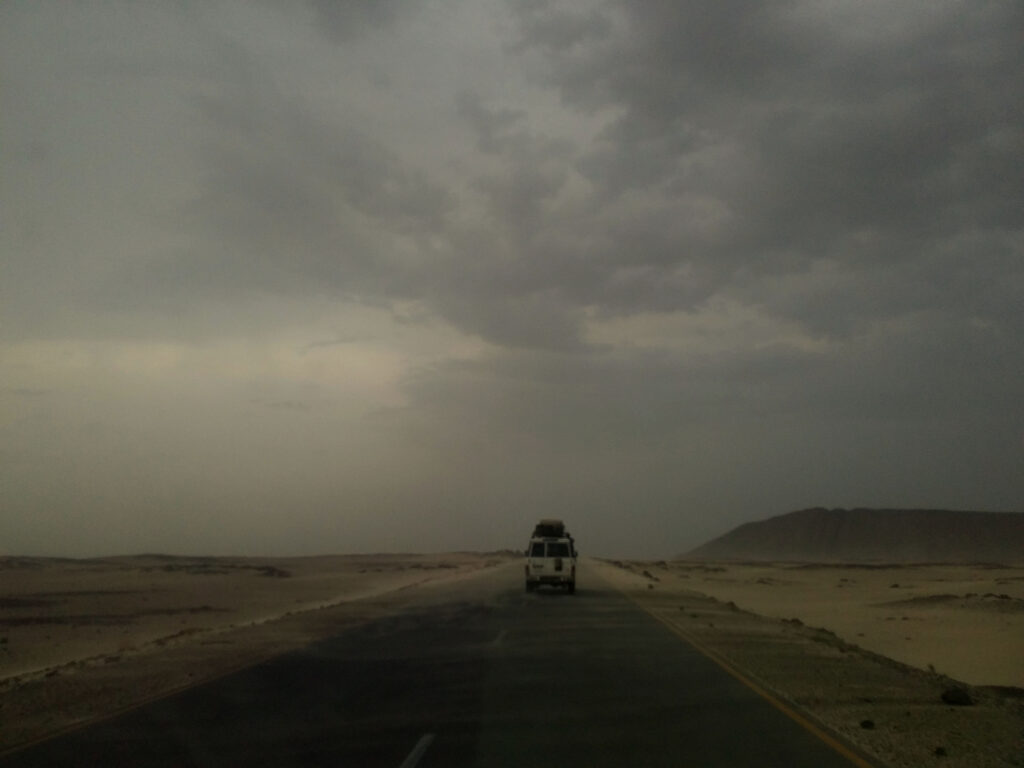
Camping at the crater edge
Eventually, we reached a tiny hamlet on the lower flanks of Erta Ale. We parked up here for a rest and some dinner. Then it was onwards on foot to the summit. Camels awaited us here to transport our camping gear. A light mattress and a sheet is all you need in this heat.
After a few hours of walking up the gradual incline of the barren slopes, we reached the crater edge. I was glad to be walking at night. The heat would simply be unbearable in the day. At the top, you can look down directly into one of the world’s longest persisting lava lakes. The molten lava of the lake cast a red glow on the thick rising smoke. And we got an occasional glimpse of the bright lake beneath.
How clear your view of the lake will be depends a bit on the amount of gases escaping from the rising magma at the time. The weather also has an influence as high winds can help blow smoke away. Even if it’s smoky though, the scene is extremely unique and beautiful.
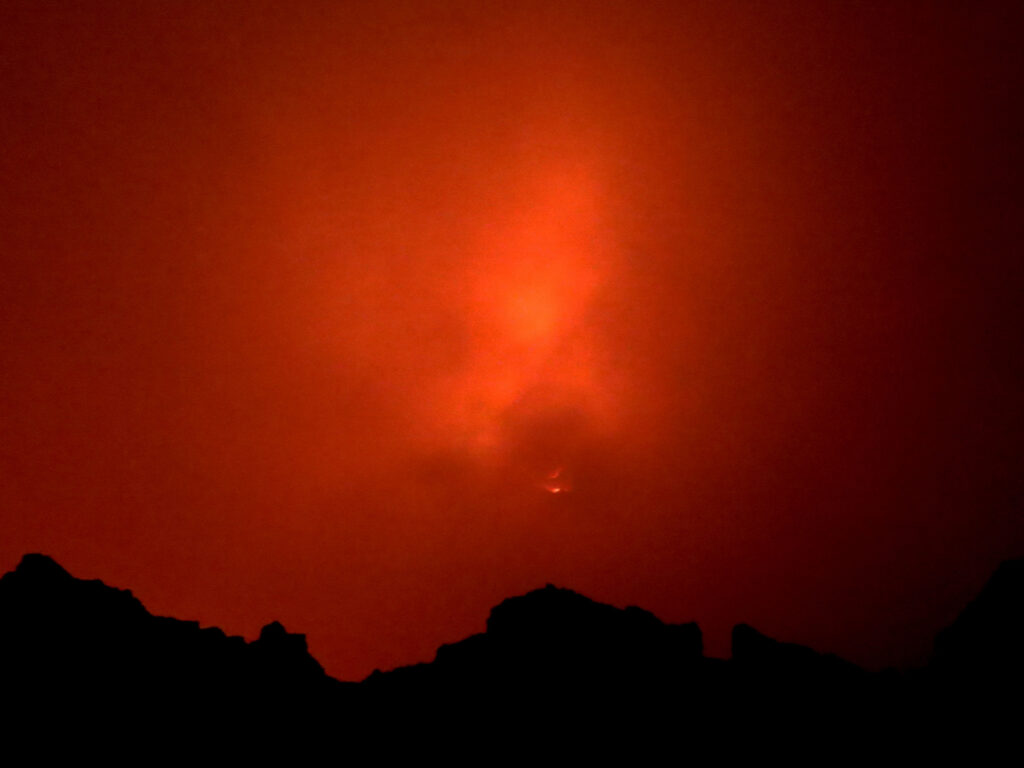
After some time, we set up our mattresses and bedding just down from the crater edge. You can expect it to be hot even during the night. Also, don’t be surprised if there’s a very pungent smell of sulphur. Not the best for your health but worth it for this experience!
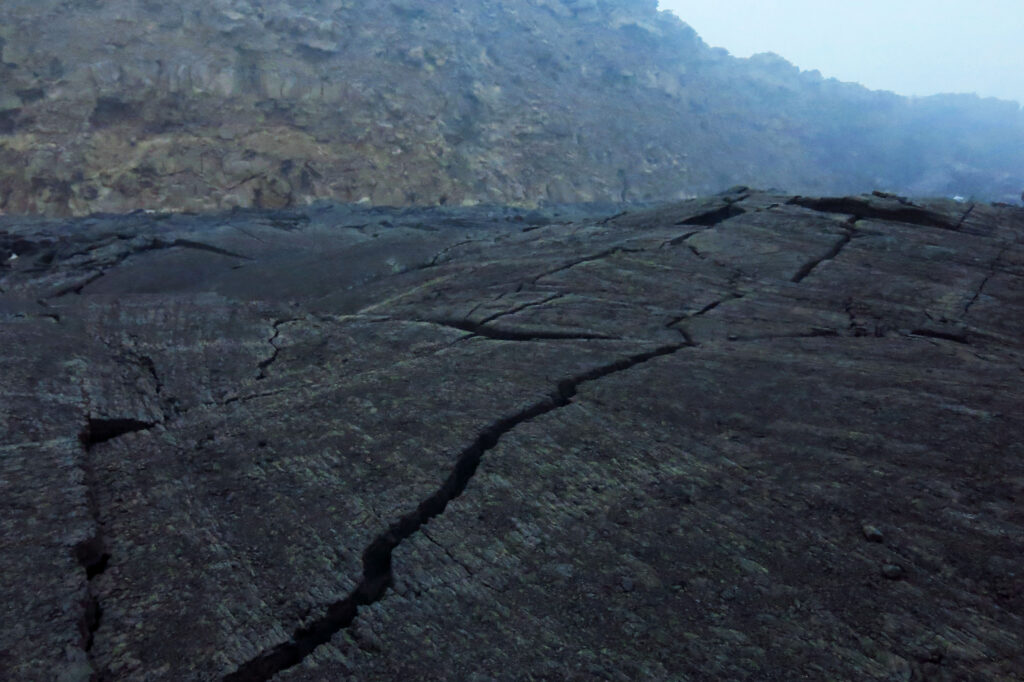
Ancient seabeds and acid pools
To beat the heat, we set off back down the mountain at dawn. After a quick breakfast at the little hamlet where we’d parked, we continued the journey. The next stop was the vast salt flats of Lake Assale (Lake Karum). The lake itself is very shallow, but surrounded by a blinding white salt pan which you’ll drive over. The salt was deposited after episodic flooding of seawater from the Red Sea into the area during periods of high sea level.
Next stop was Dallol, a unique landscape of bizarre salt formations and hydrothermal systems. Centered on a circular collapsed crater, you’ll see green acid ponds fed by hypersaline high temperature acidic hot springs, fumaroles and intriguing salt formations stained various shades of red due to oxidisation of iron deposits and other impurities.
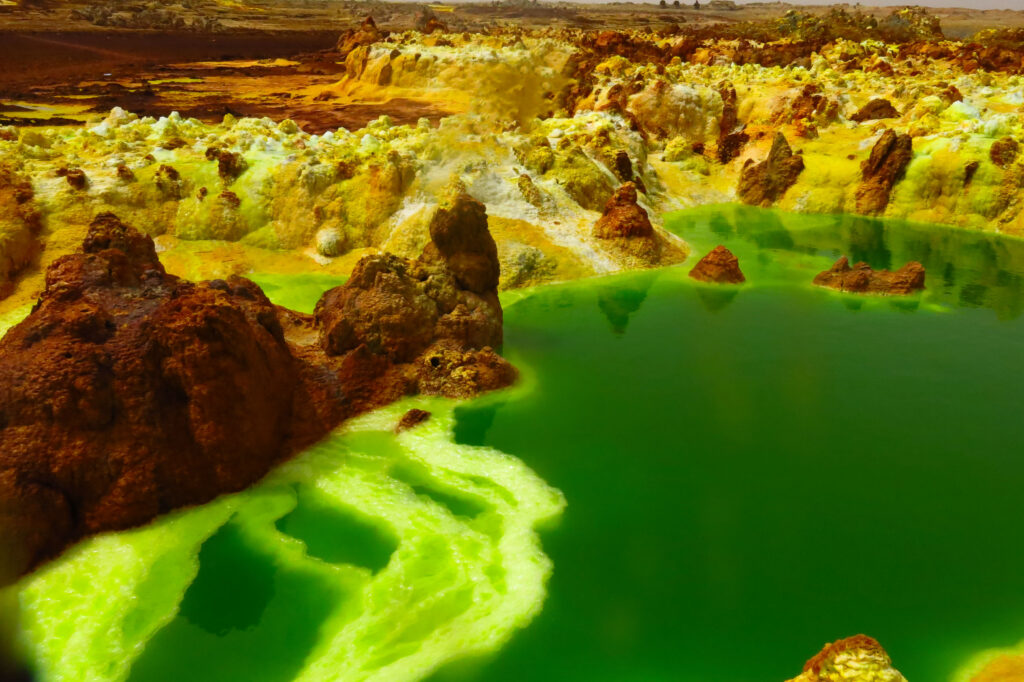
Amazingly, evidence of life in the form of ultra-small microorganisms has been found here, adapted to the inhospitable conditions. Personally I wouldn’t like to live in a boiling acid pool, but these little critters seem to like it. Existence of life in such an extreme environment has been studied here to help understand how life might survive on other planets.2
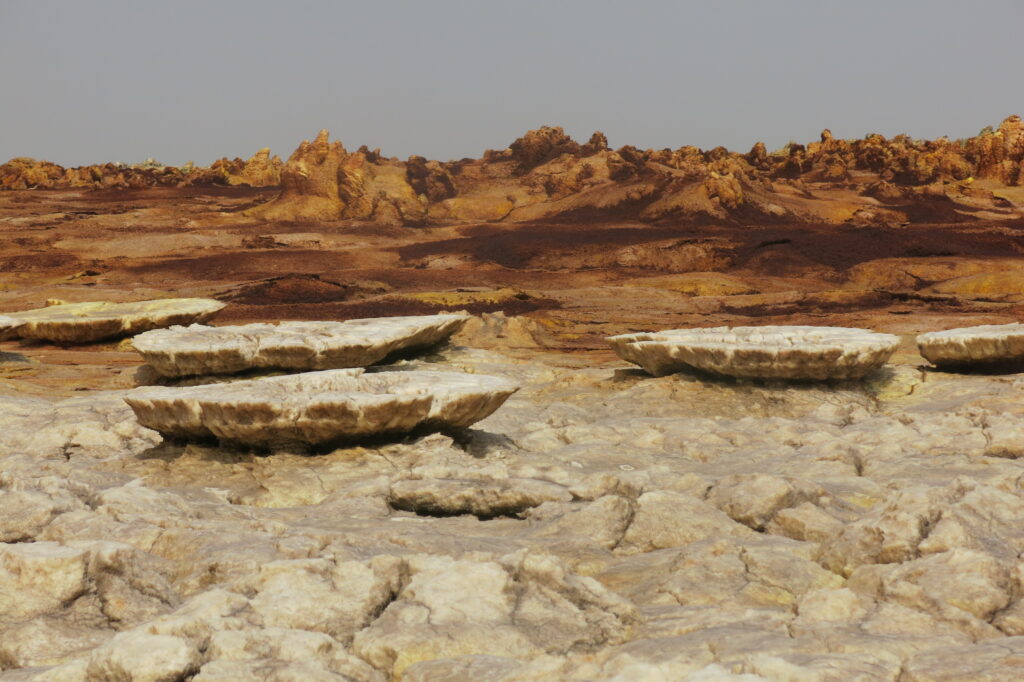
After some time at Dallol, we headed onwards. On the second night we stayed in some very basic accommodation on the road back to Mekele. Everyone was packed into a room with mattresses on the floor. But after a long full day, I still slept very well.
The Danakil Depression
The Danakil Depression reaches over 120 metres below sea level and is one of the lowest places on earth. Temperatures here average at 34°C year round, making it the hottest inhabited place on earth. In June it gets even hotter, with mean maximum temperatures reaching 47°C and temperatures over 50°C regularly recorded.
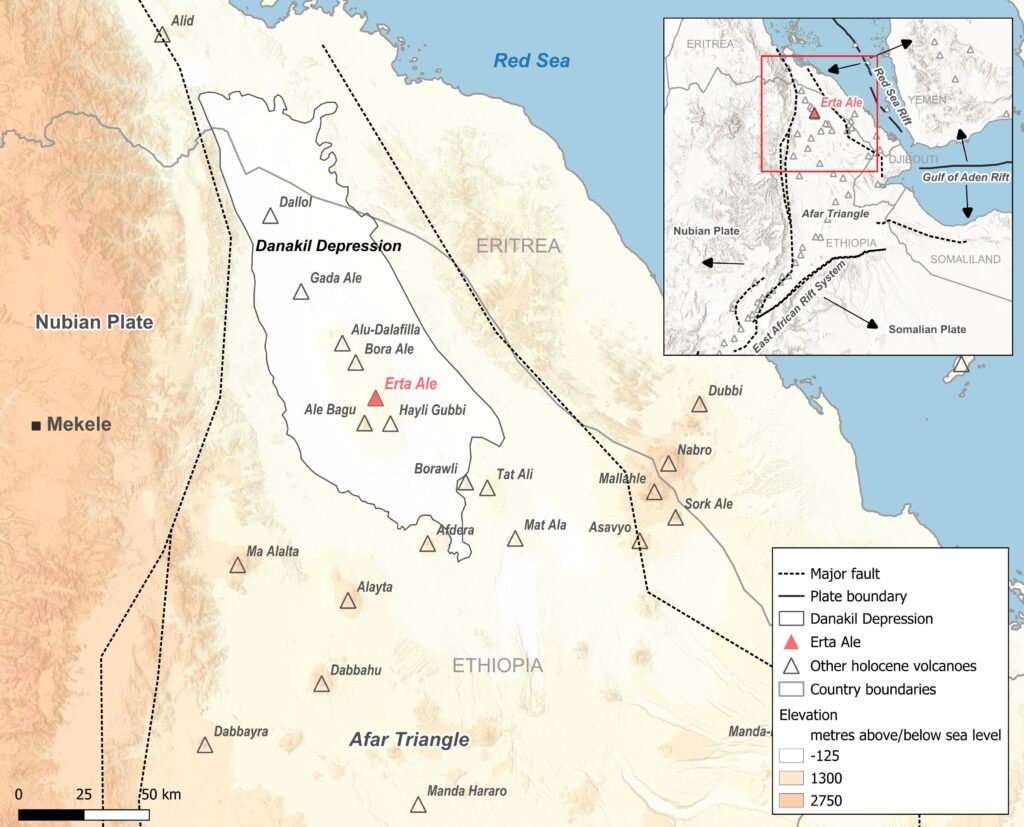
The Danakil Depression sits within the Afar Triangle, the northernmost point of the East African Rift Valley. The Rift Valley is an active divergent tectonic plate boundary stretching 3500km south to Mozambique. The Nubian plate to the west of the system is splitting apart from the Somali plate to the east, causing the African continent to split into two at a rate of ~6-7mm/year.3
That might sound pretty slow, but on geological timescales the rift will continue to sink and in a few million years, ocean waters will flood the basin.2 North of the Afar Triangle, the Arabian Plate is also moving to the north forming the Red Sea Rift.
The salt flats found across the Danakil Depression formed due to historic flooding from the Red Sea during periods of high sea level. This has occurred multiple times in geological history, most recently around 130,000 years ago.4
Seawater flooded into the basin due to the area’s low elevation and proximity to the coast. This left behind coral reef deposits on the edges of the basin and thick deposits of salt and evaporite deposits, including the salt flats and hypersaline lakes that can be seen at Lake Afrera and Lake Karum today.
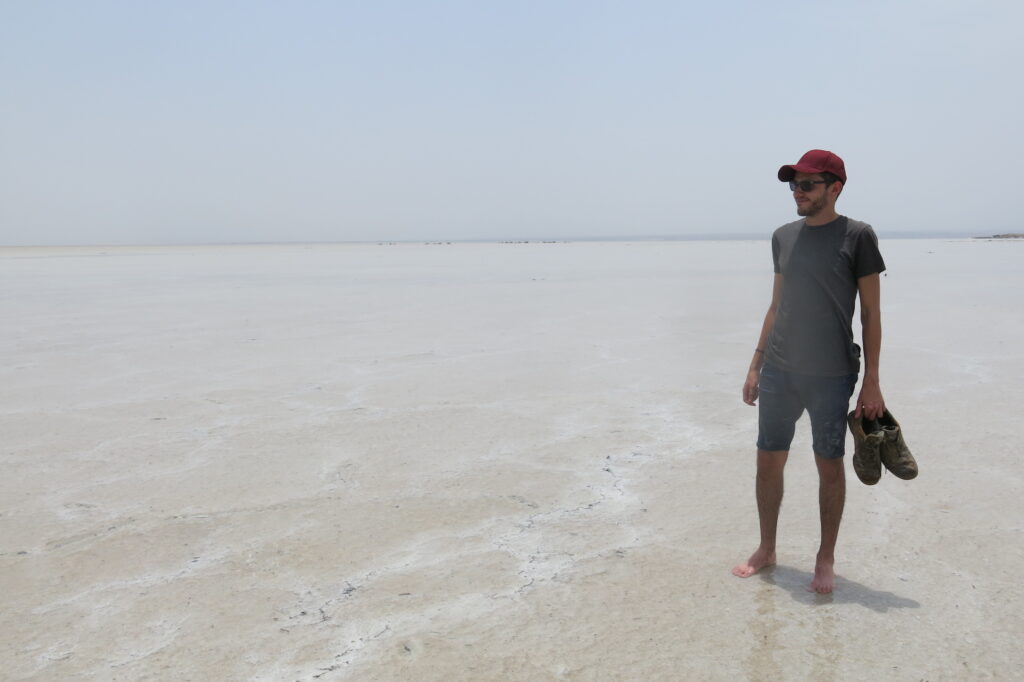
The eternal lava lake
Erta Ale is one of 58 Holocene volcanoes in Ethiopia and Eritrea, the majority of which are concentrated around the Afar Triangle. It’s the most active volcano in Ethiopia5. Known as “smoking mountain” in the local Afar language, Erta Ale is a basaltic shield volcano sitting on top of a large ridge rising to 613m above the Danakil Depression.
Volcanic activity in the region is a result of active rifting, allowing magma to rise up from the mantle towards the surface. The magma pushes its way through fissures and dikes and is currently erupting at the surface at Erta Ale’s lava lakes.
Erta Ale’s lava lakes sit within two steep-sided pit craters at the volcano’s desolate summit. The lava lake in the southern crater has been active since at least 1967 and possibly since 1906. The lava lake in the northern crater experienced renewed activity since 2023 after more than 50 years of inactivity. Lava lakes are extremely rare and the ones at Erta Ale are two of only a handful in the world.6
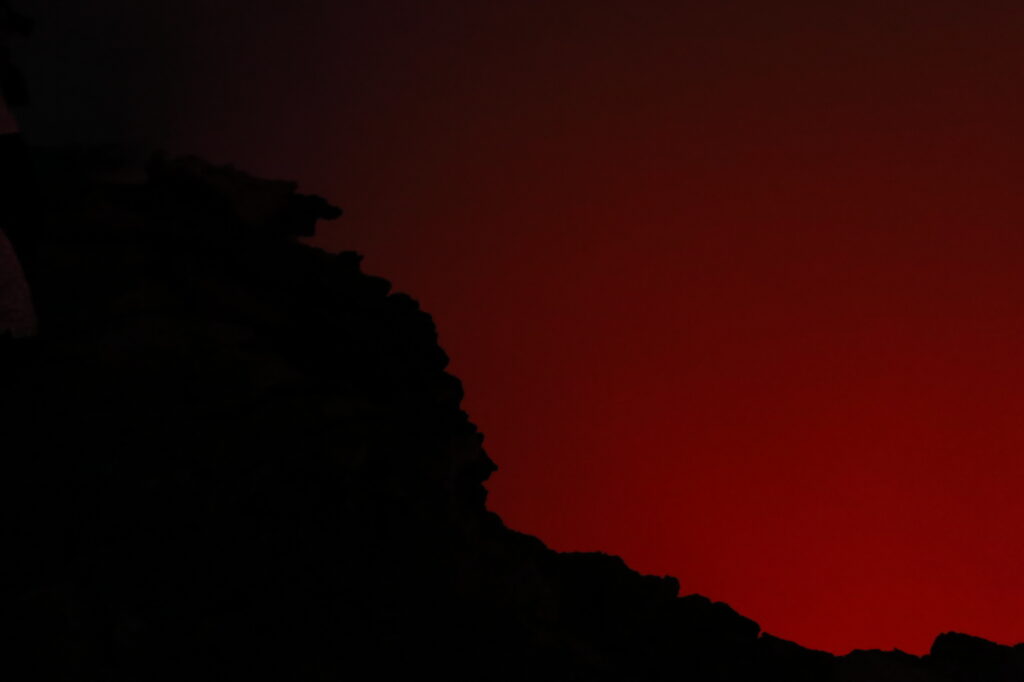
Whilst eruptions have been continuous, there are occasional pulses in activity. The surface level of the lava lakes vary and occasionally lava overflows the crater rims. Dramatic activity in 2017 led to such an event, when lava flows reached up to 3km across the caldera to the northeast, south and west. Fissure eruptions also occurred in the caldera. Crater rim collapses and ash eruptions have also occurred in the past.7
The lava’s low viscosity, or runniness, is due to it’s basaltic composition. The lava lakes are fed continuously through fissures. Volcanic gases are easily released and there’s no time for pressure to build up so you won’t generally find very explosive eruptions here. Lava cools quickly on the surface of the lake as it’s exposed to the surrounding air, forming the characteristic solid fragmented crust.
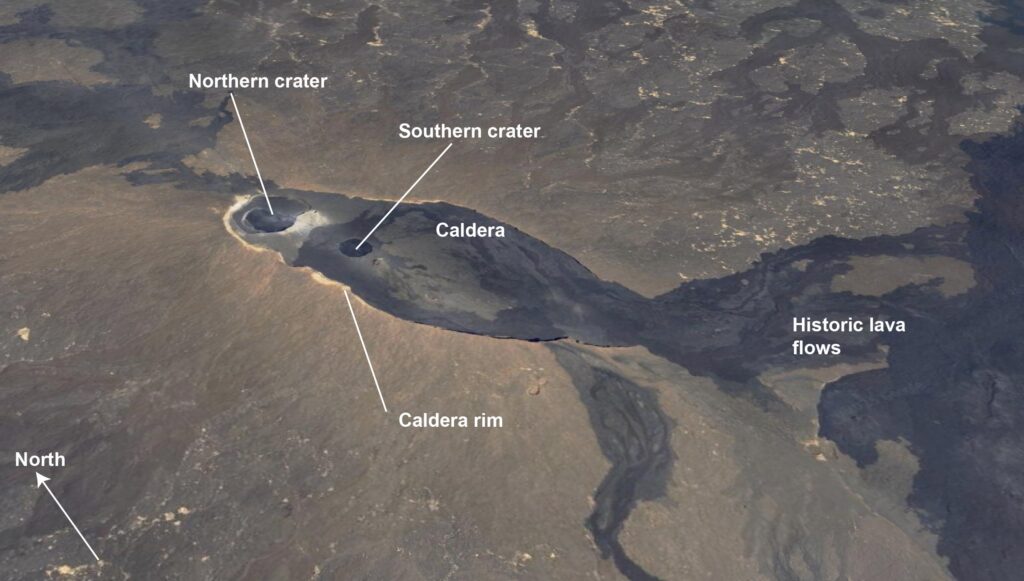
Erta Ale is located in a very remote part of the world. Without people or infrastructure nearby, volcanoes are just a hazard, not a risk. However, surges of activity have affected nearby populations. A major eruption in 2005 reportedly led to the displacement of around 50,000 nomads and the death of 250 livestock.8
Obviously there’s a risk to tourists and guides getting so close to the lava lakes, so be cautious and follow expert advice! Often the biggest risk in the region is actually the extreme heat and lack of water.
Salty volcanoes
Nearby Dallol is another volcanic complex in the Danakil Depression. It was formed as magma interacted with underground springs and evaporite deposits. This led to hydrothermal activity as water was heated up, causing explosions and creating hot springs at the surface.
Dallol is the most recent of several explosion craters in the area. It was formed during an eruption in 1926. This resulted in a complex of intriguing salt formations known as salt cones as salt was melted and resculpted. Green pools of acidic brine also formed and iron deposits of multiple colours were left behind due to oxidisation processes.9
Practicalities
Getting there: as of 2025, Semera, the capital of Afar, is currently the most common starting point to reach the Danakil Depression. Most people visit Erta Ale and the Danakil Depression on a tour. It’s not recommended to go alone due to the remoteness of the area. I went with ETT Travel. They have an office in Nega City Mall in Addis Ababa. They can also help you book your travel via air (or bus, but check the current security situation) to Semera. You can also see other tour options of various lengths with a range of operators on Tripadvisor here.
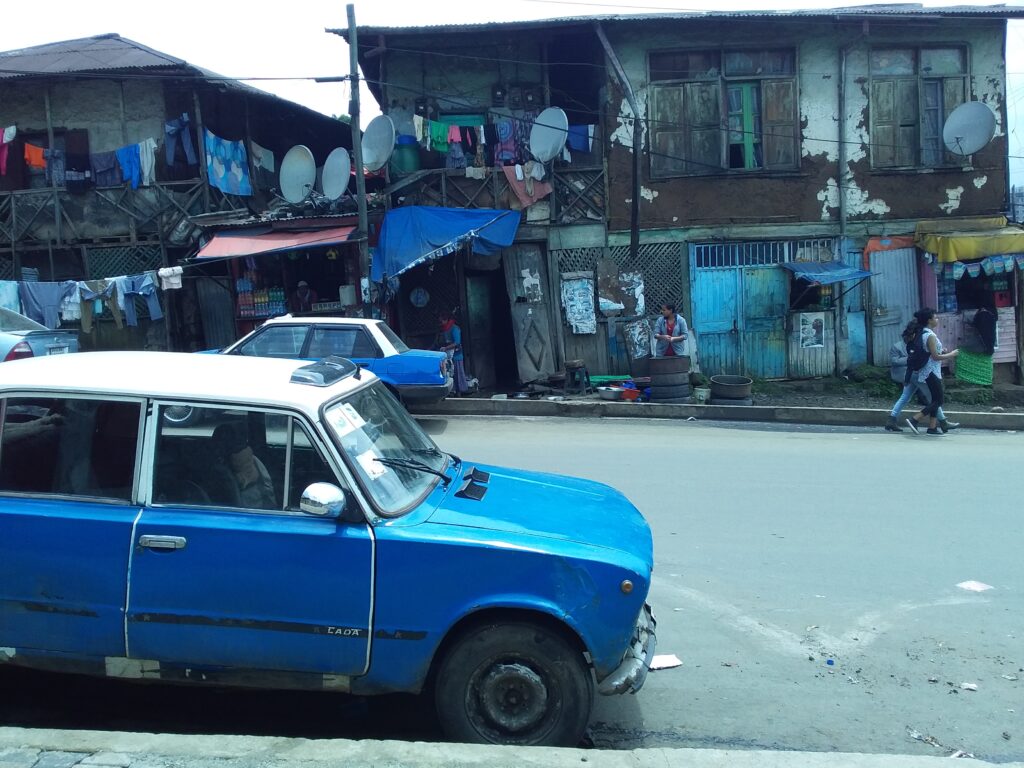
Visas: unless you’re from Kenya or Djibouti, you’ll need a visa to travel to Ethiopia. Most nationalities can get a visa on arrival. Otherwise you’ll need to get one before travelling. Check here for more details.
When to go: as we’ve already seen, the Danakil Depression is one of the hottest places on earth. Temperatures are coolest between November and February. You can still expect it to be hot though! Rain and flooding can be an issue between July-September. If you want to make your life a little easier, visit between November and February.
Extend your trip: Ethiopia is a spectacular country and there are many other places to visit. I visited Erta Ale and the Danakil Depression as part of a three week trip around the country. Some other highlights of my trip included: sitting with the grazing gelada monkeys in the Simien Highlands, visiting the Blue Nile Falls, and eating Ethiopian food. I didn’t get the chance to visit Lalibela, but many people tell me this was one of their highlights. Since I went in 2018, the security situation has evolved, so please check travel advisories.
Culture
Language: Amharic is the official language of the government in Ethiopia. However, as of 2007, only 29% of the population reported speaking it as their main language. In total, between 45 and 86 languages are spoken in the country. The Danakil Depression lies within the Afar region, where the main language is Afar, spoken by 89% of the inhabitants.10
Food and drink: Ethiopian food is delicious and very unique. Injera is the staple food. Made from a grain known as teff, it has a soft, spongey and slightly sour taste. Ethiopian meals are often composed of a large Injera served on a big plate with various stews, curries and vegetables on top. This is normally eaten communally with friends and family. Ethiopia is also the birthplace of coffee, which is an important part of life here. Coffee is traditionally served as part of a coffee ceremony, an intricate and traditional process of brewing and serving coffee.
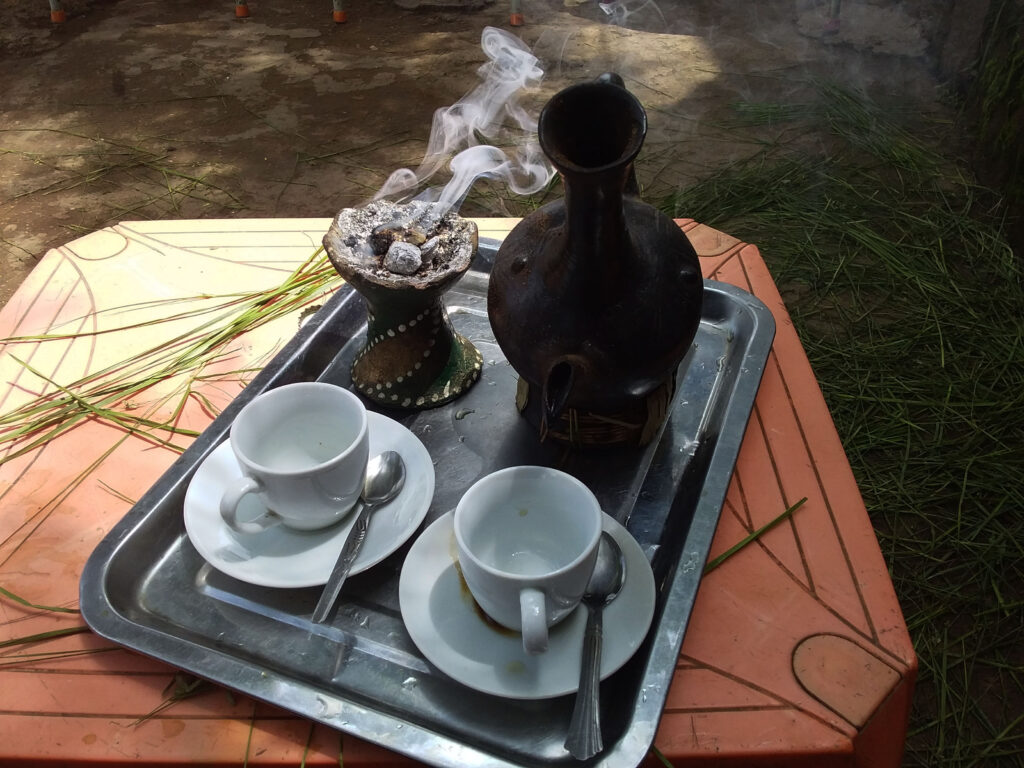
Other recent volcanic activity in Ethiopia
At the southern end of Afar, there was a sudden upsurge in volcanic activity in January 2025. This resulted in the emergence of steam vents and mud volcanism along fissures close to Dofan volcano. Increased activity was also observed at Fentale volcano. You can see this map I worked on here.
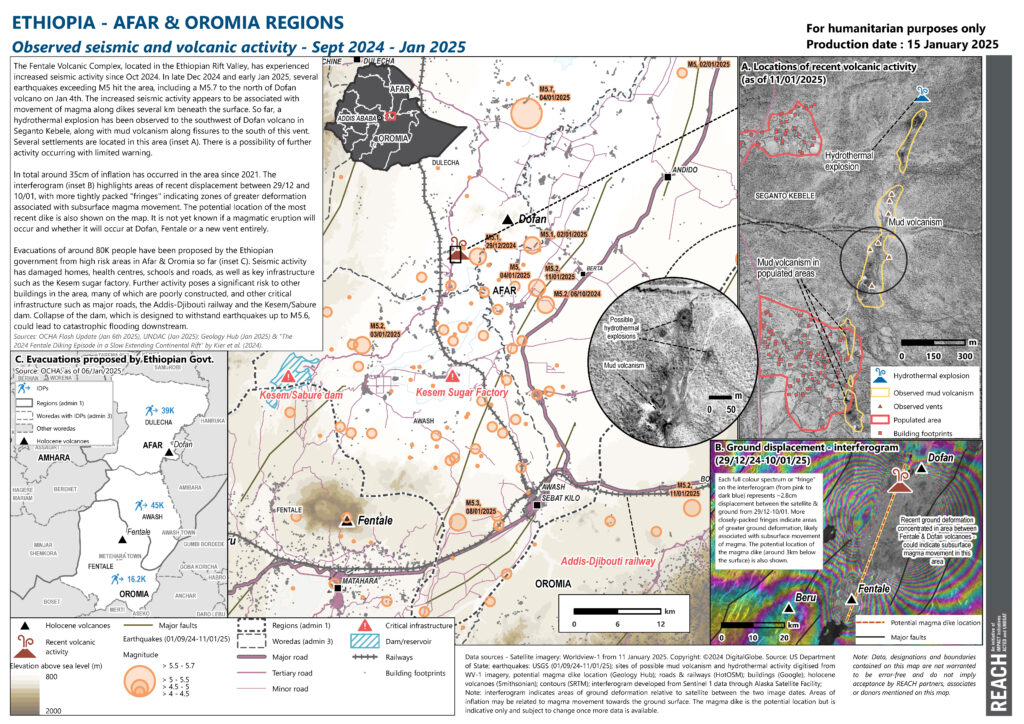
- Iodine Global Network. ↩︎
- Nature. ↩︎
- The Geological Society. ↩︎
- Sedimentology. ↩︎
- Smithsonian (Holocene volcanoes). ↩︎
- Smithsonian (Erta Ale) ↩︎
- Smithsonian (Erta Ale) ↩︎
- Smithsonian (Erta Ale – 2005) ↩︎
- Smithsonian (Dallol) ↩︎
- Translators Without Borders. ↩︎
Discover more from magmachambertravel.com
Subscribe to get the latest posts sent to your email.